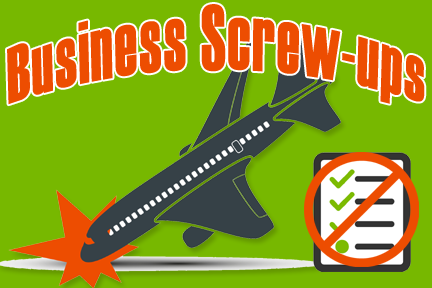 If you had to guess, what would you say the Number ONE reason was for business screw-ups? Specifically, what’s the main reason for stupid errors, dumb reoccurring questions, unclear communications, employee un-civil war and blunders?
If you had to guess, what would you say the Number ONE reason was for business screw-ups? Specifically, what’s the main reason for stupid errors, dumb reoccurring questions, unclear communications, employee un-civil war and blunders?
The reason may surprise you!
“Forgetting”— is the Number ONE reason for the free-for-all confusion and chaos in business!
How do I know?
Before learning the art of systematization, I was a “professional” at business screw-ups. Moreover, an aficionado at business blunders. Not something I’m proud of, because my ignorance cost me dearly!
Did you know, way back in 1858 a man by the name of Hermann Ebbinghaus studied and developed a system to measure “forgetting?”
It’s called the Hermann Ebbinghaus Forgetting Curve. It’s true!
According to Ebbinghaus’ measurements, people forget two-thirds of the information they receive within 24 hours? I believe it, because I’ve seen it!
This being the case, it’s easy to understand WHY employees ask the business’ owner and managers the same questions repeatedly—and WHY stupid errors reoccur daily.
Amazing to me is, experienced business owners seriously believe and repeat the myth that there’s nothing business can do about “the forgetting curve.” As a result, they say, “People are human; therefore, we must accept “forgetting” as normal, and just deal with it.”
My response to that type of Mom & Pop-business-thinking is, “Tell the airline industry or your surgeon, if they forget something, you’ll understand. After all, they’re only human, right?”
Business Screw-ups Not Tolerated at American Airlines
When I was a business owner in the printing industry, we printed for American Airlines. At that time, their hub was in Nashville, Tennessee. I was always amazed at the amount of detailed information contained in their aircraft service manuals, which we printed daily.
Routinely we received calls from an American Airlines purchasing agent asking the status of a certain manual, days before we were to deliver it. When we responded, for example, the manuals were 50% completed, the agent would say “OK, scrap them all, invoice us and come pick up the updated version.”
The reason for that was, someone in the organization had identified an issue or error with the manual; consequently, updating was immediate, no matter the cost. Their customer’s safety vastly outweighed the cost of reprinting those just-printed manuals.
The process of maintenance improvement is systematic at American Airlines. In fact, updating maintenance checklists and manuals is continual and routine. Nothing left to chance—FORGETTING is not an option!
In like manner, we operated just like the “big boys” at our company. Control Checklists for quality were routine and the process of improvement, continual. If a professional business screw-up like myself can change, so can any small business owner.
You think American Airlines, appreciated our quality control checklists? I’m sure they did!
Did I mention? Great systems work!

Recent Comments